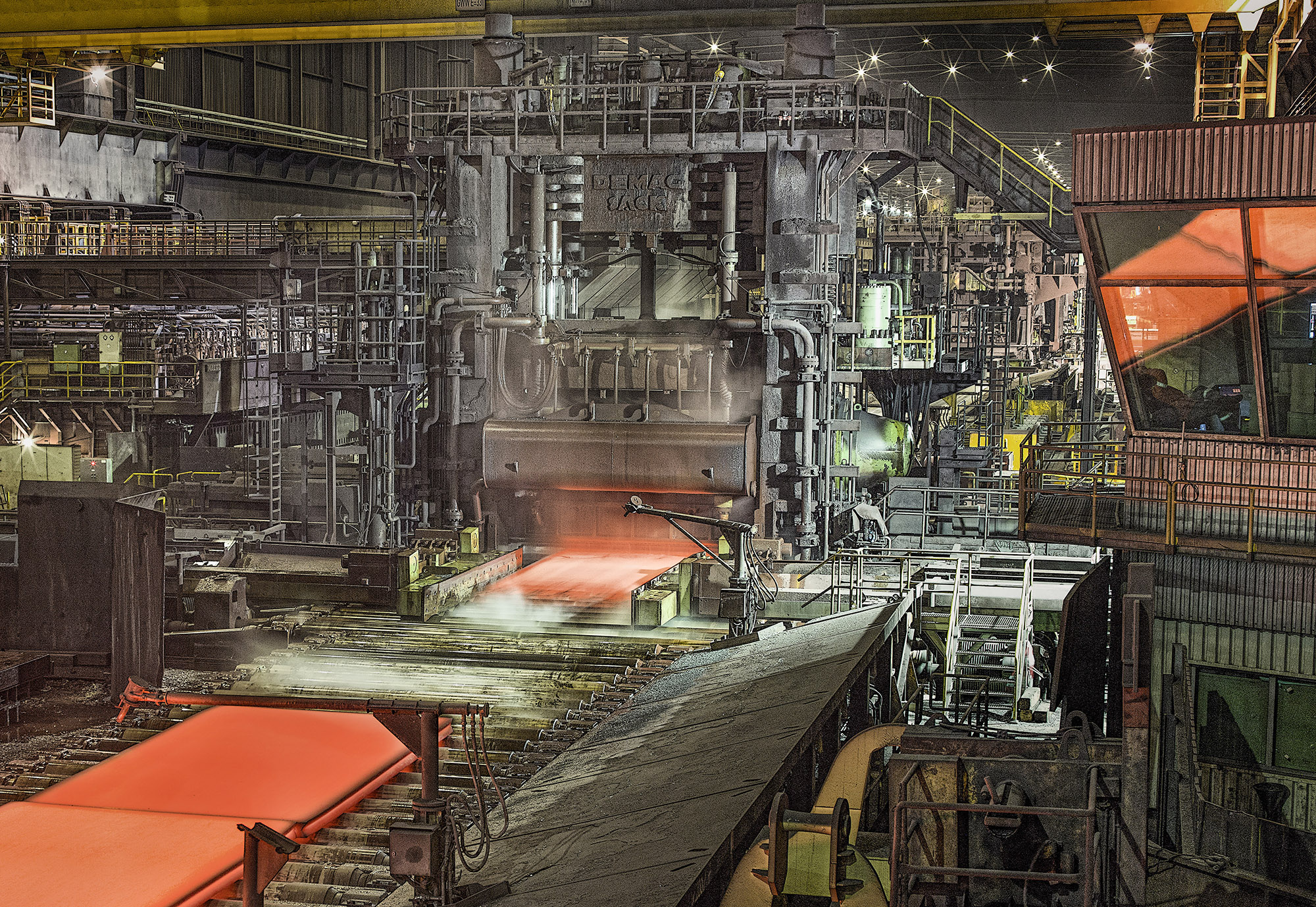Originally developed for the production of welded linepipe, thermomechanically rolled steels have now proven advantageous in a large range of applications, including offshore wind energy and modern structural-steel engineering.
These materials gain their uniqueness from their combination of extremely impressive mechanical strength properties and high toughness with excellent cold formability and weldability, enabling their use even under the most demanding conditions.
They are thus not only enormously productive, but also cost-efficient and sustainable. In addition, structural-steel and design engineers can now make their structures more slender, with superior aesthetics, precisely thanks to the outstanding combination of properties possessed by TM steels.
Production
The production of our TM steels begins with the molten steel, known simply as the "heat", in the steelmaking plant. The critical precondition is a high inclusion purity (usually referred to simply as "cleanliness"), with a low carbon content and low amounts of tramp elements, such as phosphorus, sulphur, nitrogen and boron, contained in the steel. These content levels are accomplished by desulphurising the (future) steel as early as the crude iron (or "hot metal") stage and later subjecting it during secondary metallurgy to a special vacuum treatment.
This is followed by thermomechanical (TM) rolling. Unlike classical rolling, this process is applied not only for the purpose of shaping the product, but also to systematically impart the combinations of mechanical properties already mentioned. The process takes place in three phases:
1. Heating of slabs to a defined discharge temperature
2. Rolling in accordance with a specified rolling-pass schedule
3. Optionally, cooling at a faster rate than used for other products (accelerated cooling, ACC)
An additional heat treatment process (tempering) is also then applied if necessary.

© Dillinger
When this process is completed, the steel has an extremely fine-grained, low-pearlite microstructure. This microstructure, which is typical of TM steels, is the guarantor of an optimum combination of toughness and mechanical strength.

The microstructure of a TM-rolled DI-MC 355 (a) and of a DI-MC 460 (b) compared to a normalised microstructure (c)
© Dillinger
The advantages of TM steels
TM steels are especially suitable for welding, because preheating prior to welding can be considerably reduced or, in some cases, omitted completely, thanks to these steels' "lean" chemical analysis (low carbon equivalent). The higher mechanical strengths thus achievable without any significant loss of weldability then permit the reduction of the plate thickness necessary on structural-analysis criteria. Material and welding costs are thus diminished, while a lower plate weight makes transportation easier. This, in turn, enormously improves the cost and ecological balance of the project. The creation of filigree structures is made economically possible thanks to the superior mechanical strength properties of TM steels.
Have we awakened your interest, would you like to know more about thermomechanically rolled steels? DI-MC is our brand name for TM plates perfectly tailored to the needs of modern structural-steel engineering.

Rolling of TM plates
© Dillinger
Aktien-Gesellschaft der Dillinger Hüttenwerke, Werkstraße 1, 66763 Dillingen/Saar, Telefon: +49 6831 47 0, Telefax: +49 6831 47 2212, Sitz: Dillingen/Saar, Registergericht: Amtsgericht Saarbrücken HRB 23001, Vorsitzender des Aufsichtsrats: Reinhard Störmer, Vorstand: Stefan Rauber (Vors.), Joerg Disteldorf, Daniël Nicolaas van der Hout, Dr. Peter Maagh, Markus Lauer, Jonathan Weber
Imprint
Privacy policy
Copyright © 2016 Dillinger. All rights reserved.
Imprint
Privacy policy
Copyright © 2016 Dillinger. All rights reserved.


